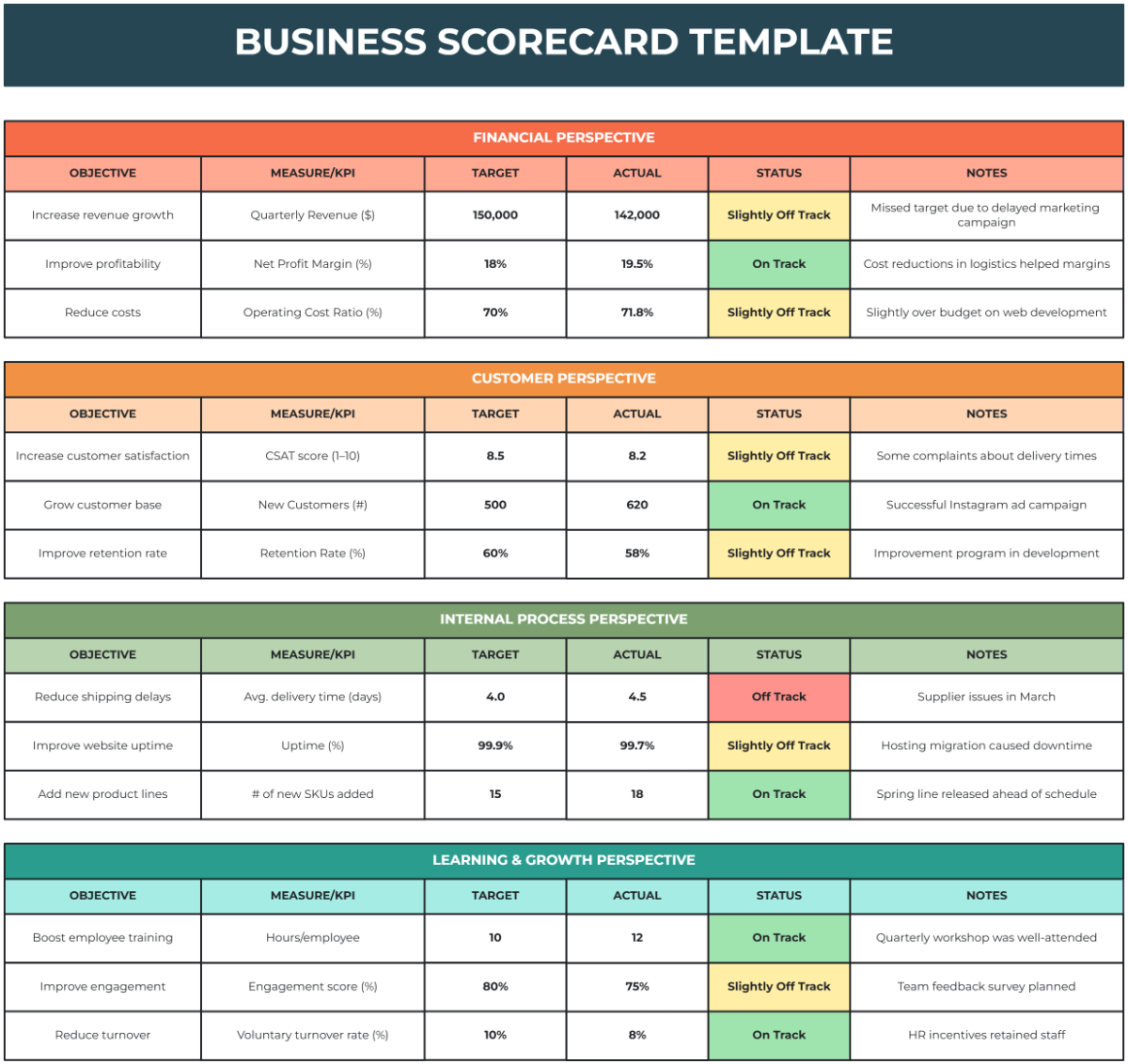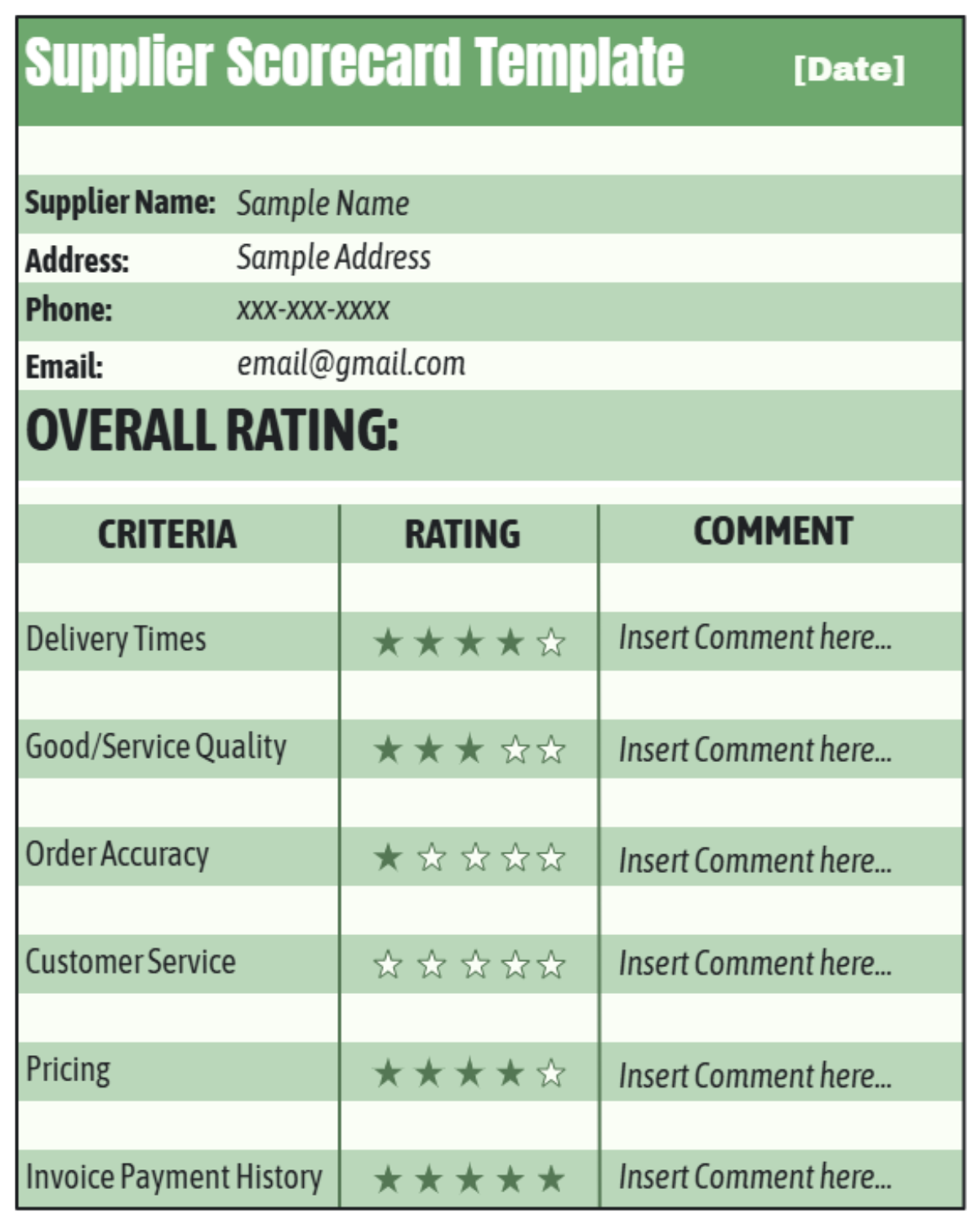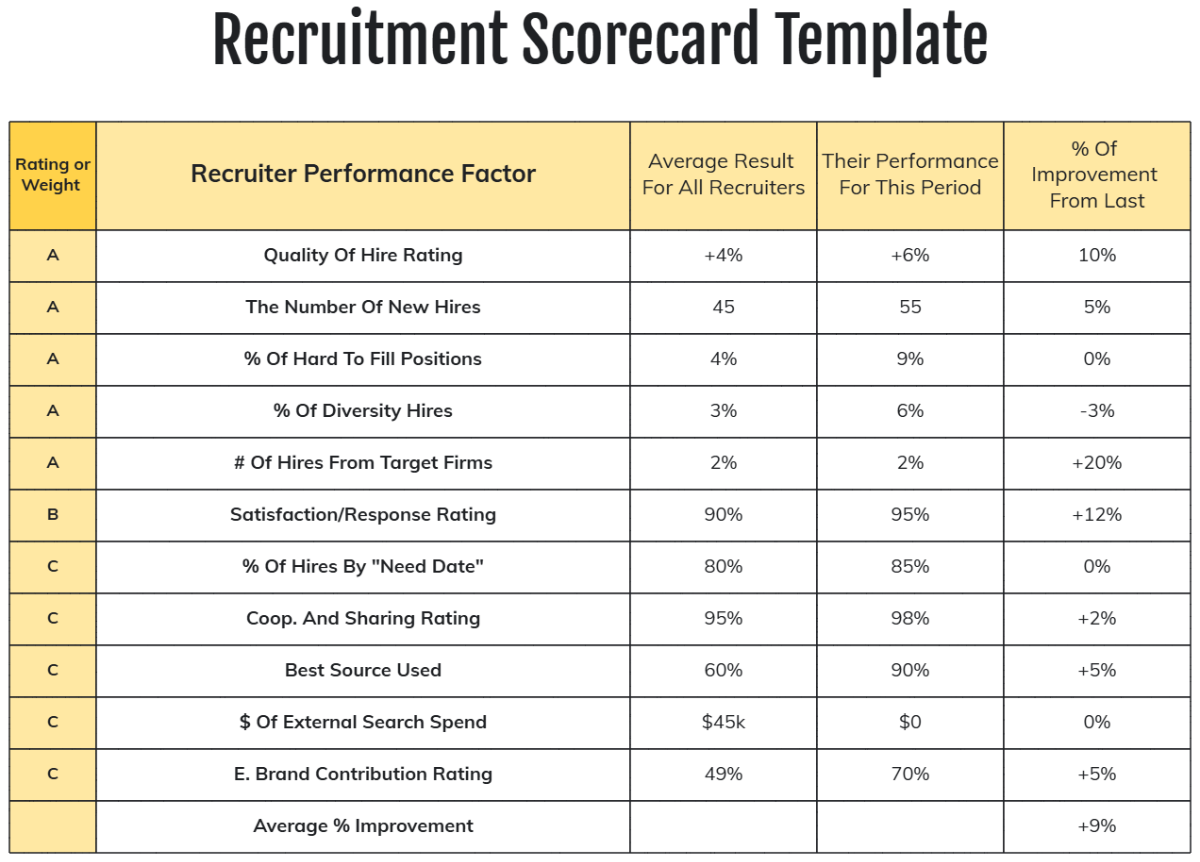Scorecard Requirements
Prepared By: [YOUR NAME]
Date: [DATE]
I. Introduction
This Scorecard Requirements Document outlines the criteria and metrics used to evaluate performance, progress, or achievement in a specific area. It defines the standards and benchmarks for assessing performance, often in the context of business goals, employee evaluations, or project milestones. The purpose of this document is to provide a detailed and comprehensive framework for scorecard usage, ensuring consistency and objectivity in evaluations.
II. Objectives
The primary objectives of the scorecard are as follows:
Establish Clear Performance Criteria: Define precise and transparent criteria for evaluating performance to ensure fairness and consistency across all evaluations.
Align Goals: Align personal performance targets with the company's overarching goals to promote a unified and collaborative drive toward business success.
Measure Progress Systematically: Implement a method to monitor and assess progress for timely interventions and adjustments to keep projects on track.
Facilitate Informed Decision-Making: Leverage information and analysis to enhance the development and implementation of strategies.
III. Scope
Employee Performance Reviews: Utilizes the scorecard to evaluate individual employee performance, ensuring consistent and objective assessments that contribute to personal development and organizational growth.
Project Milestone Evaluations: Employs the scorecard to track and assess the progress of project milestones, facilitating timely completion and adherence to project timelines and objectives.
Business Goal Assessments: Implements the scorecard to measure and evaluate the achievement of business goals, ensuring alignment with strategic objectives and driving overall business success.
IV. Performance Criteria
Criteria | Weightage (%) |
|---|---|
Quality of Work | 30 |
Timeliness | 20 |
Team Collaboration | 25 |
Innovation | 15 |
Customer Feedback | 10 |
V. Benchmarks and Standards
A. Performance Rating Scale
Rating | Description | Score Range |
|---|---|---|
Outstanding | Exceeds expectations in all areas | 90-100 |
Exceeds Expectations | Consistently performs above expectations | 75-89 |
Meets Expectations | Meets all job requirements | 60-74 |
Needs Improvement | Meets some but not all job requirements | 45-59 |
Unsatisfactory | Fails to meet job requirements | 0-44 |
B. Project Milestone Standards
Initiation: The project charter must be completed, outlining the scope, objectives, stakeholders, and deliverables. It must be reviewed and approved by all key stakeholders for alignment and commitment.
Planning: Resource allocation plans detailing required resources, timelines, and responsibilities must be reviewed and approved by the project management office for feasibility and readiness.
Execution: At least 90% of tasks must be completed on schedule to ensure the project meets its objectives efficiently.
Closure: Quality assurance reports must pass without critical issues, ensuring deliverables meet required standards for final acceptance and handover.
VI. Data Collection and Reporting
A. Data Sources
Data for performance evaluations and milestone assessments will be collected from a variety of reliable sources, including:
Employee Performance Metrics: Data will be gathered from HR systems to evaluate individual performance based on predefined criteria.
Project Management Software: Information on milestone tracking will be sourced from project management tools to monitor and assess project progress.
Customer Feedback Surveys: Customer feedback will be collected through surveys to gauge satisfaction and performance from the end-user perspective.
Quality Assurance Reports: Detailed reports from quality assurance processes will provide insights into the quality and compliance of deliverables.
B. Reporting Structure
Monthly reports will be generated to provide a comprehensive overview of performance and progress. These reports will include:
Summary of Performance Evaluations: A summary of the performance assessment outcomes, emphasizing major insights and patterns.
Detailed Scores and Ratings: In-depth scores and ratings for each employee, offering a granular view of individual performance.
Project Milestone Status Reports: Updates on the status of project milestones, including progress, challenges, and completion rates.
Benchmark Comparisons: Analysis comparing current performance against established benchmarks and standards to identify areas of strength and opportunities for improvement.
VI. Review and Updates
This Scorecard Requirements Document will undergo an annual review and update to maintain its relevance and effectiveness. During this review, feedback from stakeholders will be actively sought and incorporated to identify and address areas for improvement or to reflect any changes in organizational goals. This iterative process ensures that the scorecard remains a dynamic tool that aligns with evolving business needs and continues to support accurate and objective performance evaluations.
VII. Conclusion
Following the guidelines and criteria in this Scorecard Requirements Document guarantees that organizations adopt a consistent and structured approach to performance evaluation, which supports data-driven decision-making, aligns efforts with organizational goals, and promotes continual improvement by offering clear benchmarks, ultimately boosting overall business success.

















































